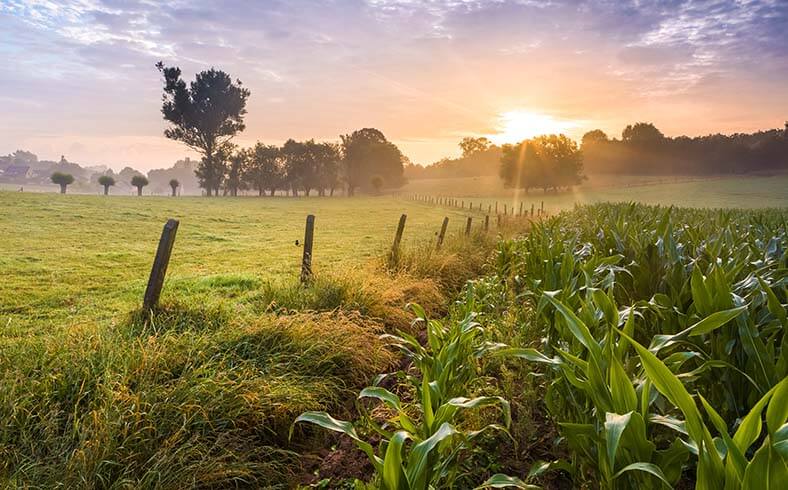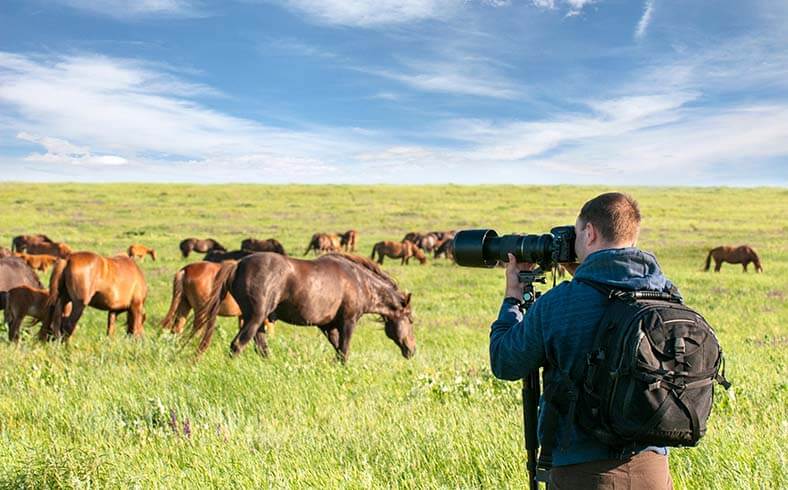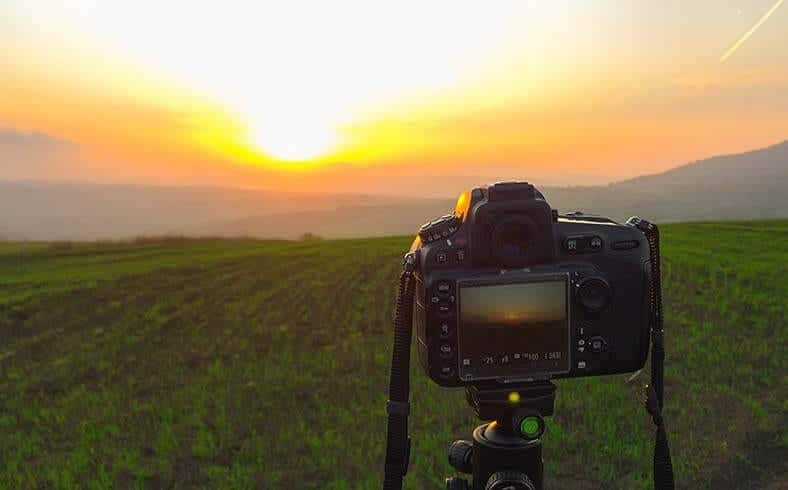High-quality photographs are among the most important elements of any land listing. You can use all the beautifully descriptive words in the world, but if your photos don’t show your property at its best, you’ll have a hard time attracting potential buyers. Here are several tips for photographing your land in ways that make your listing stand out.
First impressions matter
You only get one chance to make a first impression, so make sure it’s the best one possible. Before you start shooting, mow the grass, trim bushes, clean up any trash or debris that may be lying around, and remove any distracting or unwelcoming signs (“Keep out” for example).
When you take your photos, make sure they are well-aligned, with no crooked rooftops or horizons. Clarity is equally important. Photos should be sharp and crisp, without blur. When you create your land listing, make sure you put your best photos first, and only include pictures that enhance your property’s attractiveness.

Focus on potential
Your photos should emphasize your property’s best natural features and give potential buyers a clear idea of how the land might be used. Take photos that showcase the most appealing aspects of your land, ideally during its most attractive season. If your land has a view, highlight this. It’s often the biggest selling point for vacant property.
You may be tempted to take a photo of something (a shed or ruined barn, for example) just because it’s there, but unless that something is an asset, don’t include it.

Use the right equipment
You can snap good photos with a decent phone these days, but professional camera equipment is better if you really showcase your property at its best. Use a zoom lens to vary your shots and a tripod to keep photos from becoming blurred or lopsided. Natural light is always preferable, but if you must use flash, try an external flash unit that allows for softer, more angled light than a camera’s built-in flash.
While you can take great photos using a camera’s automatic settings, an understanding of aperture and shutter speed is helpful. Play around with different combinations to see which results in the most effective photo.
Pay attention to light
To give potential buyers a better idea of your property’s character, go out at different times of day and, if possible, shoot in different seasons. Avoid shooting in the harsh sunlight of midday, as it will only make your scenes look washed-out. Overcast weather can make panoramic scenes look gray and dull, but clouds also soften shadows and can make colors appear deeper. Try using this to your advantage by focusing on smaller details.
The best light for photography is during the “golden hour”—the hour or so after sunrise or before sunset—when the light is softer and colors more intense. Taking photos during this time will automatically make your land look more appealing.

Compose your shots carefully
It might be tempting to just point your camera in different directions and click away, but you’ll get more effective shots if you slow down and think about the composition of your photo. Are there any distracting or unappealing background elements? If so, change your position. Does your photo have a clear focal point, something that draws the eye? If not, look for something that can add interest to your image.
Once you’ve found a focal point, don’t just position it in the middle of the shot. Instead, consider what photographers call the rule of thirds. Imagine that your photo is divided into nine equal parts, with two lines dividing it into thirds horizontally, and two vertically. The most effective spot to position your main subject is at one of the points where the horizontal and vertical lines intersect. The same goes for the horizon. By placing it lower or higher in the frame, rather than in the middle, you’ll create a more visually interesting image.
Another effective photographic technique is to use leading lines. This may be a path, a line of trees, a stream, or anything else that leads from the foreground into the distance, thereby drawing the eye through the photo.
For land listings, it’s best to shoot mostly horizontal (landscape) photos.
Vary your perspective
When composing your shots, don’t forget to vary your perspective. Shoot from up high to show the lay of the land, or get down low to emphasize grass, crops, or flowers. Experiment with different locations, angles, and focal points. You never know which shot might end up being the most effective.
Aerial photography can be a useful tool to help potential buyers get a sense of your property’s layout. Depending on your land’s character and size, it may be worth using a drone to capture a birds’-eye view.
If taking high-quality photos yourself seems too daunting, hire a professional. It’s worth the investment to make your property look its best so you can attract more qualified potential buyers.
